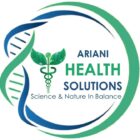Romantic love and its complex physiology
Written by Anri van der Merwe (BSc Hons Physiology)
 Most of us have experienced being ‘in love’ along with all the ‘roller coaster’ feelings associated with it. But what is love actually? Romantic love can be nerve-wrecking, confusing and somewhat terrifying, but also exciting, pleasurable and uplifting. Love is a multidimensional, universal and complex phenomenon and induces many physiological changes in the human body.
Most of us have experienced being ‘in love’ along with all the ‘roller coaster’ feelings associated with it. But what is love actually? Romantic love can be nerve-wrecking, confusing and somewhat terrifying, but also exciting, pleasurable and uplifting. Love is a multidimensional, universal and complex phenomenon and induces many physiological changes in the human body.
Romantic love can be defined as a motivational state associated with feelings of attachment. It fulfils a need for commitment with one partner. Romantic love or falling ‘in love’ can be divided into three phases: lust, romantic attraction and attachment. During each phase different neurological and biochemical systems are at work. This means that many messenger molecules, such as hormones play a role in love. These molecules give rise to different states, which could explain the roller coaster-like feelings experienced when in love.
Lust (libido/ sex drive) is considered as a craving for sexual fulfilment and the gonadal hormones (androgens like testosterone, and oestrogens) play a major role here. High testosterone levels are linked to increased sexual activity. Testosterone activity increases when in love and interestingly this hormone is elevated during ovulation. Studies have shown that manufactured male pheromones (androgens) increases the sexual attraction of men to women, and female pheromones (oestrogens) increases the sexual attraction of women to men. Research shows that menstrual synchronisation between women who live together or near other women, occurs due to pheromones. Brain areas associated with sexuality is activated when heterosexual women and homosexual men smelled androgens, and when homosexual women and heterosexual men smelled oestrogens. These findings did not occur when these individuals smelt the opposite pheromone. Therefore, pheromones are linked to sexual orientation and not gender.
Attraction (infatuation and passionate romantic love) is characterised by an increase in energy and focused attention on the positive aspects of the preferred partner. Feelings such as excitement, euphoria, loss of appetite, increased heart- and breathing rate, emotional dependency, sleeplessness, diarrhoea and obsessive thoughts can be experienced in this phase. These feelings can be experienced due to decreased levels of serotonin as well as increased levels of dopamine and noradrenaline.
Attachment includes increased oxytocin and vasopressin levels and are associated with social comfort, calmness, emotional union, decreased stress and security. Oxytocin is involved in all phases of love, but is most prominent in attachment. This hormone ensures feelings of trust, devotion and loyalty which are important for lasting relationships. It also plays a role in social, sexual and maternal behaviours. Interestingly, breast milk contains high levels of oxytocin, thus facilitating infant-mother attachment and bonding. Oxytocin is also involved in memory and behaviour. Vasopressin and oxytocin seem to increase in response to touch, caress and during intercourse. It is suggested that both these hormones will create a bond to keep the partners together when romantic attraction has faded away.
The three phases of love are also associated with different behaviours and evolved to direct different aspects of reproduction. Lust evolved to encourage individuals to pursue sexual union with any member of the species. Attraction evolved to encourage individuals to select a specific partner. Attachment evolved to help individuals remain together long enough, by forming stable pair-bonds, to complete parental duties.
All three phases are essential aspects to our lives and sexual health. They can exist concurrently or independently in a relationship. For example an individual can be deeply attached to a partner, to whom he/she is also attracted to and for whom a great deal of lust is felt. Alternatively, men and women in long term relationships have reported deep attachment to a long term partner, while experiencing attraction to someone else, and feeling lust in response to verbal, visual, or mental stimuli unrelated to either partner.
Love is without a doubt a very intricate and complex phenomenon and anyone in love can vouch for that.
